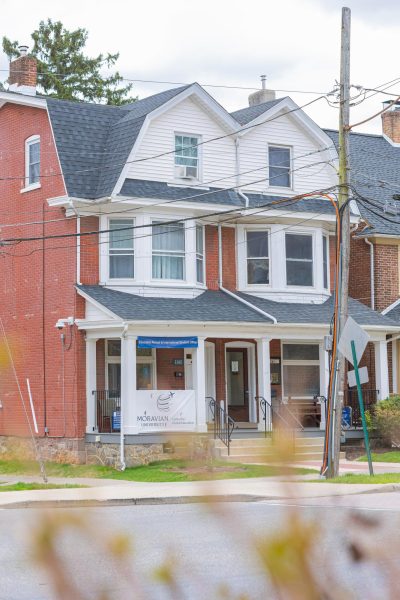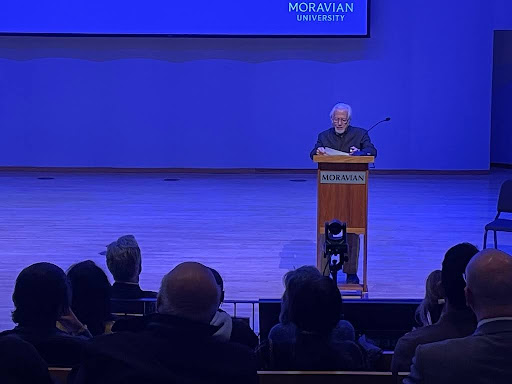Meanwhile, in Ireland: The 1916 Easter Rising

The Easter Lily in remembrance of the fallen of Easter, 1916, courtesy of Ireland Calling
In 1916, an insurrection, following in the failed shadow of many prior, broke out in Ireland. The week of 24 April, Easter week, saw a war break out in the streets of Dublin, with skirmishes breaking out all across the country from Limerick to Wexford.
Led primarily by drama teachers, playwrights, poets, and actors, largely inspired by the literary and theatrical works of the Abbey Theatre, the 1916 Easter Rising, while a failure itself, would lead to the Irish War of Independence, in turn, leading to Ireland finally gaining its freedom. The rising of 1916 was the turning point.
Monday, 24 April 1916… Easter Monday. As the sun rose over the River Liffey, a small group of people led by former barrister turned drama teacher and Irish cultural advocate Pádraig Pearse, gathered.
As the Angelus Bells tolled over the city, a shot was fired behind Dublin Castle, the centre of British Operations in Ireland. An Irish-born British Policeman lay dead. So began the events of the 1916 Easter Rising.
At some point during the course of the day, two flags were flown above the city from the roof of the GPO. One was the Irish Tricolour, the current flag of Ireland, and the other stated in carefully painted gold letters the words “Irish Republic.”
That afternoon, on the steps of the General Post Office (GPO), Pearse began reading out a Proclamation of Irish Independence to passersby, who largely ignored what he was declaring and carried on their business as if it were any other day.
Tuesday, 25 April 1916… That morning, City Hall, which had briefly been under rebel control, was taken back by the British army. At this point, the British were outnumbered, having been caught vastly off-guard by the attack.
That afternoon, Pádraig Pearse attempted to gain support from the citizens of Dublin by reading out the “Manifesto to the Citizens of Dublin.” But like the Proclamation of Irish Independence the day prior, it gained little attention, even if a large crowd had gathered to listen.
Wednesday, 26 April 1916… After two days of increased fighting in the streets, the British had organized themselves. That morning, they sailed a large armored ship up the River Liffey, into the heart of Dublin City. And began to open fire, raining fire bombs at Liberty Hall, which had become the central base of operations for the Irish rebels, but had been abandoned sometime before the bombings.
The bombs were so precise they were launched through the windows of Liberty Hall, burning out the inside but leaving the exterior mostly unscathed.
That afternoon, the rebels raised a banner on the side of Liberty Hall that stated boldly “We serve neither King nor Kaiser, but Ireland.”
Many civilians, especially children, became caught in the crossfire as heavy artillery began shelling the city. It was reported that a 14-year-old boy was so horribly disfigured from the number of bullets that had torn apart his body it took several weeks to identify him. His mother only knew it was her son by a lucky coin she knew he always carried in his pocket.
Additionally, the majority of British casualties, some 240, occurred on Wednesday as 17 rebels ambushed the British reinforcements, slowing their advancements. Of the 240 British who were killed, only 4 rebels died on Wednesday.
Thursday, 27 April 1916… Rebel barricades that blocked the streets, preventing British military vehicles from navigating the city, were broken down. Machine guns were brought in by the British, determined to snuff out this Irish insurrection. An all-out war had broken out.
Friday, 28 April 1916… Determined to snuff out the insurrection, the British began using Guerrilla type tactics to avoid direct fire from the strategically placed rebels. Fifteen unarmed, innocent civilians were murdered by British soldiers who forced their way into homes, breaking down holes in the walls and “Mouseholing” their way through the city to avoid direct fire.
Civilians had been scavenging among the wreckage, looting whatever goods they could find. Even children became looters. This looting caught even more civilians in the crossfire.
Saturday, 29 April 1916… The Easter Rising was brought to an end.
Cumann na mBan nurse, Elizabeth O’Farrell walked out of the now ruined, burnt-out shell of the GPO, waving a white flag of surrender. The rebels had been cornered. O’Farrell would be escorted around Dublin to the different locations occupied by the rebels, officially delivering the surrender and calling them to a ceasefire.
After the fighting, the rebels were rounded up and those considered to be its leaders were imprisoned.
The following were those executed for their role as the primary leaders of the rising: Pádraig Pearse, James Connolly, Thomas “Tom” Clarke, Thomas MacDonagh, Seán Mac Diarmada (Seán MacDermott), William “Willie” Pearse, Joseph Mary Plunkett, Roger Casement, Éamonn Ceannt, Con Colbert, Edward Daly, Seán Heuston, Thomas Kent, John McBride, Michael Mallin, and Michael O’Hanrahan.
Sixteen, shot in the courtyard of Kilmainham Gaol.
Women such as the Countess Constance Markievicz, and a number of others, were pegged to be executed as well, but were pardoned simply because they were women. To this, Markievicz stated that she “wished they had the decency to shoot me.”
Markievicz also commented upon her arrest “I went out to fight for Ireland’s freedom and it does not matter what happens to me. I did what I thought was right and I stand by it.”
Some men had their sentences commuted from execution because of being born outside of Ireland, such as American-born Eamonn De Valera.
Following the events of the Easter Rising, and the execution of its leaders, a media storm blew up across the nation. What began with little notice or interest among the majority of common citizens quickly began to swell into an uproar against the atrocity committed by the British.
What followed would become the Irish War of Independence in 1919, and, eventually, came a victorious end to Ireland’s long fight for freedom from British rule.
By the end, 485 people were dead from just the events of the previous week. Half of this number were civilians, and 40 of the civilians were children, who had been home from school for Easter week. 2,000+ people were wounded.






